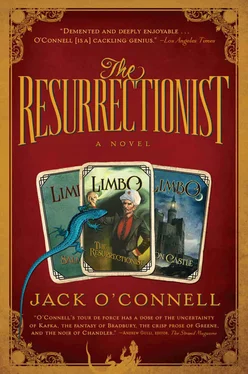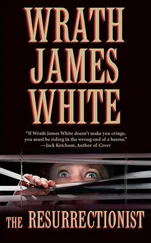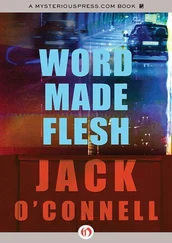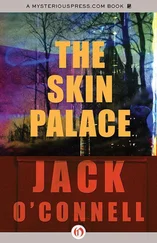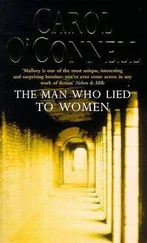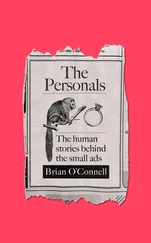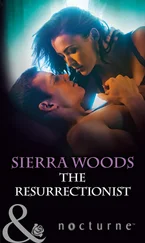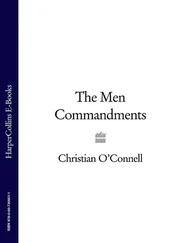Jack O'Connell - The Resurrectionist
Здесь есть возможность читать онлайн «Jack O'Connell - The Resurrectionist» весь текст электронной книги совершенно бесплатно (целиком полную версию без сокращений). В некоторых случаях можно слушать аудио, скачать через торрент в формате fb2 и присутствует краткое содержание. Год выпуска: 2009, Издательство: Algonquin Books, Жанр: Современная проза, на английском языке. Описание произведения, (предисловие) а так же отзывы посетителей доступны на портале библиотеки ЛибКат.
- Название:The Resurrectionist
- Автор:
- Издательство:Algonquin Books
- Жанр:
- Год:2009
- ISBN:нет данных
- Рейтинг книги:4 / 5. Голосов: 1
-
Избранное:Добавить в избранное
- Отзывы:
-
Ваша оценка:
- 80
- 1
- 2
- 3
- 4
- 5
The Resurrectionist: краткое содержание, описание и аннотация
Предлагаем к чтению аннотацию, описание, краткое содержание или предисловие (зависит от того, что написал сам автор книги «The Resurrectionist»). Если вы не нашли необходимую информацию о книге — напишите в комментариях, мы постараемся отыскать её.
those who create them and those who consume them. About the nature of consciousness and the power of the unknown. And, ultimately, about forgiveness and the depth of our need to extend it and receive it.
The Resurrectionist — читать онлайн бесплатно полную книгу (весь текст) целиком
Ниже представлен текст книги, разбитый по страницам. Система сохранения места последней прочитанной страницы, позволяет с удобством читать онлайн бесплатно книгу «The Resurrectionist», без необходимости каждый раз заново искать на чём Вы остановились. Поставьте закладку, и сможете в любой момент перейти на страницу, на которой закончили чтение.
Интервал:
Закладка:
Which raises the question: how did I move from Treasure Chest and Richie Rich to the hermaphrodite and the mule-faced boy of the Limbo universe?
Well, let’s face it — lots of strange things happened in the eighties. And while we might want to forget many of them, I’ll always treasure the memory of strolling into a new comic book store and scoring the first issue of Mister X, Dean Motter’s short-lived but electric tale of an insomniac architect in a neon-splattered tenderloin. The comic was a trove full to bursting with all the coolest tropes — film noir, dystopian SF, Bauhaus design, German Expressionism. The story was hip, inventive, surprising, and smart. I was hooked by the checkout line.
Mister X kicked down a door for me that remains wide-open to this day, allowing a stream of rich narrative to light up my middle-aged melon. Motter’s rococo world may not have lasted long, but it gave me a gorgeous map and a hard shove into the work of Neil Gaiman and Art Spiegelman, Grant Morrison and Warren Ellis.
Beyond this, it provided the inspiration of the crucial subplot that would make The Resurrectionist a richer, deeper novel about the ways we find meaning in the most unexpected stories.
A Conversation with Jack O’Connell
What inspired The Resurrectionist?
I’d say the main source of inspiration was the book’s primary setting, known in the novel as the Peck Clinic. The Clinic is drawn from an old hospital in my hometown that sat on the crest of a hill about a half mile from my home. We walked and pedaled our bikes past this dark, ominous ark of a building that looked like no hospital we’d ever seen. It loomed over us, seemingly engulfed in a malignant aura, a heavy mansion full of angles and bows made out of ominous brown sandstone. Originally the estate of a Yankee baron with a dark imagination, it featured columns and cupolas and a never-ending roof that suggested an abundance of hidden nests and nooks. And capping it all, at the very top of the building was a great metal dome that crowned what surely must have been some insidious gothic laboratory, complete with Van de Graaff machines and unrecognizable creatures pickled in bell jars. To our kid brains, it was the perfect abode for a Victorian mad scientist with satanic ambitions. If Vincent Price ever moved into town, we knew this was where he’d take up residence.
Can you tell us about the process of writing this book?
This was the most difficult book I’ve ever written. This one took longer, went through more drafts, than anything I’ve written in the past.
Why was that?
I think the best books are the ones that really break into our consciousness and disturb the peace. The stories that insist on wrestling up things we’d rather keep hidden away and sedated. And I think the old cliché is true: if you want to evolve — as a writer or a human — there’s a need to engage your deepest, most persistent fears. At midlife, the need to do that becomes acute. Or, at least, it did for me.
The initial idea for the book came to me in a hotel room in Poitiers, France, at the ragged end of a day that had been spent trailing a friend from bistro to bistro as we talked nonstop about our mutual passion — the origins and the future of the American roman noir. That night, back in my hotel, I opened my notebook and scribbled down the bones for what I thought would be a quickly written story about Sweeney, a pharmacist from Cleveland, and Danny, his comatose, six-year-old son.
It sounds as if that initial notion evolved into something else.
I tend to develop an understanding of a book’s true concerns in the process of writing the story. But I’ve never previously experienced such a renegade. In retrospect, there were clearly some issues that my subconscious wanted, probably needed, to explore and chew on. I can recall an evolutionary moment when the book decided it wanted to be a different kind of beast, when its DNA changed. That transitional moment. The pivot. That instant when I made a small, seemingly minute move and the entire book shifted on its axis.
Can you tell us about that moment?
I was working on a simple scene: Sweeney, our protagonist, is sitting at his son’s bedside, reading from the boy’s favorite comic book. Throughout the story, I had planted this image here and there to show one of Sweeney’s last vestiges of his old, “normal” life, before the accident that caused his son’s coma. Sweeney continues to go through this motion, repeating the ritual he had shared with his boy pre-coma. Only this time, as I created the scene, I asked the questions, What is he reading? What is this comic book? Why was it Danny’s favorite? What’s the story and why did it resonate with the boy? Looking back, each of those questions was a land mine that detonated and exploded that short, simple noir tale I’d imagined at the start. The questions threw open a door into another realm. And because instinct is the novelist’s most valuable tool, I walked through that door.
Into the comic book world of Limbo?
Right. I ended up creating this substory about a wandering troupe of circus freaks. And as time went on, Sweeney’s story began to intertwine with the comic book story. There’s a lot of mirroring in The Resurrectionist between the main narrative and the freaks’ narrative. Between, we might say, real life and a fictional, dreamy realm. I can see now that I pulled Sweeney, literally, through the freaks’ story in order to effect a radical change in his consciousness. A change equivalent to the transformation that Dr. Peck would like to effect on Danny’s consciousness. And that I want to effect on the readers’ consciousness. And, finally, that the writing of the book seems to have made in my consciousness.
In what ways did writing The Resurrectionist change you?
It enlarged my perspective, I think. The process of making this book widened my sense of what identity is. Of how it evolves over time. Writing the novel gave me a bigger and clearer and more complex notion of what it means to make a family, to be a father. And, simultaneously, to be a writer. The change involves a larger, more mature perception of the tangled morality of writing itself — of making stories. Of what that process does to the writer. Of what it does to those around him. And of what it has the potential to do to, and for, the reader.
Questions for Discussion
1. In what ways does Sweeney’s story parallel the tale of the Goldfaden Carnival freaks?
2. Do you see any mirroring between characters in Sweeney’s story and those found in the Limbo story?
3. Which story line did you enjoy the most? Why? Which did you find the most meaningful? Why? Did you feel that the dual plotlines worked in conjunction with each another?
4. One interviewer felt there were no sane characters in this story. Do you agree? If not, who do you feel is sane?
5. There are several patriarchal figures in the story — Sweeney, Buzz, Bruno — and a strong matriarchal figure — Nadia Rey. What do you feel the novel has to say about the extent to which a parent or guardian will go to protect those in his or her care?
6. Who do you feel is the “resurrectionist” of the title?
7. In an interview, O’Connell has stated that the working title of the book was The Tombs . Can you recall episodes in the novel that would have evoked such a title? Do you prefer the book’s ultimate title, The Resurrectionist? Which title seems more appropriate to you and why?
8. Throughout the novel, various characters — Buzz (pages 213 and 296), the Sheep (page 237), and Nadia (page 285) — advise Sweeney to take the “leap.” What do you think they mean by this?
Читать дальшеИнтервал:
Закладка:
Похожие книги на «The Resurrectionist»
Представляем Вашему вниманию похожие книги на «The Resurrectionist» списком для выбора. Мы отобрали схожую по названию и смыслу литературу в надежде предоставить читателям больше вариантов отыскать новые, интересные, ещё непрочитанные произведения.
Обсуждение, отзывы о книге «The Resurrectionist» и просто собственные мнения читателей. Оставьте ваши комментарии, напишите, что Вы думаете о произведении, его смысле или главных героях. Укажите что конкретно понравилось, а что нет, и почему Вы так считаете.
